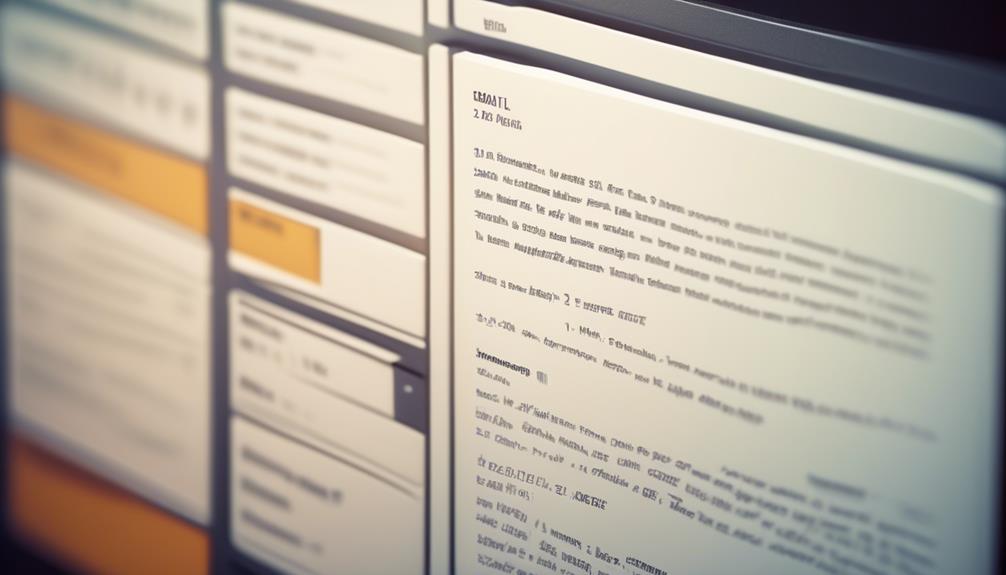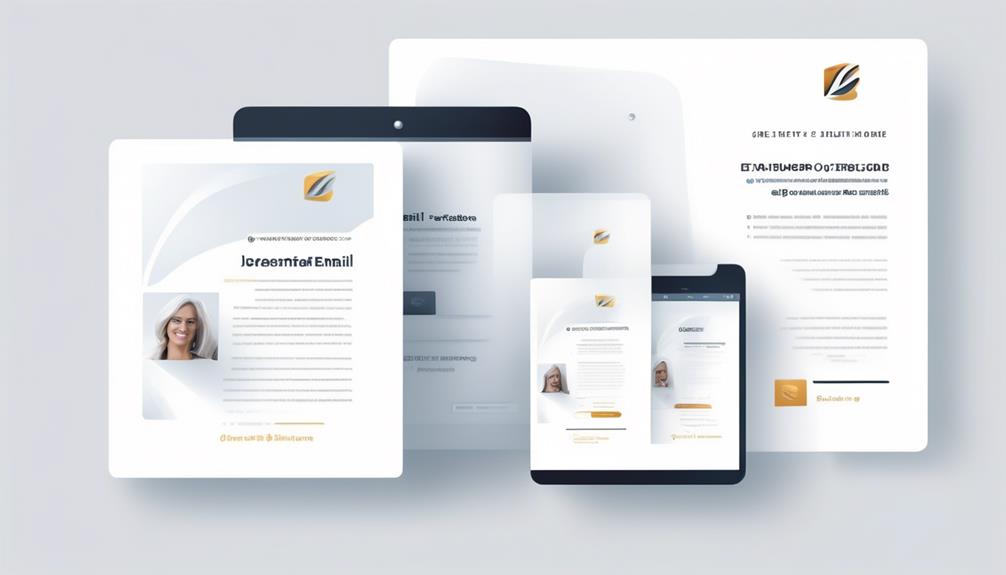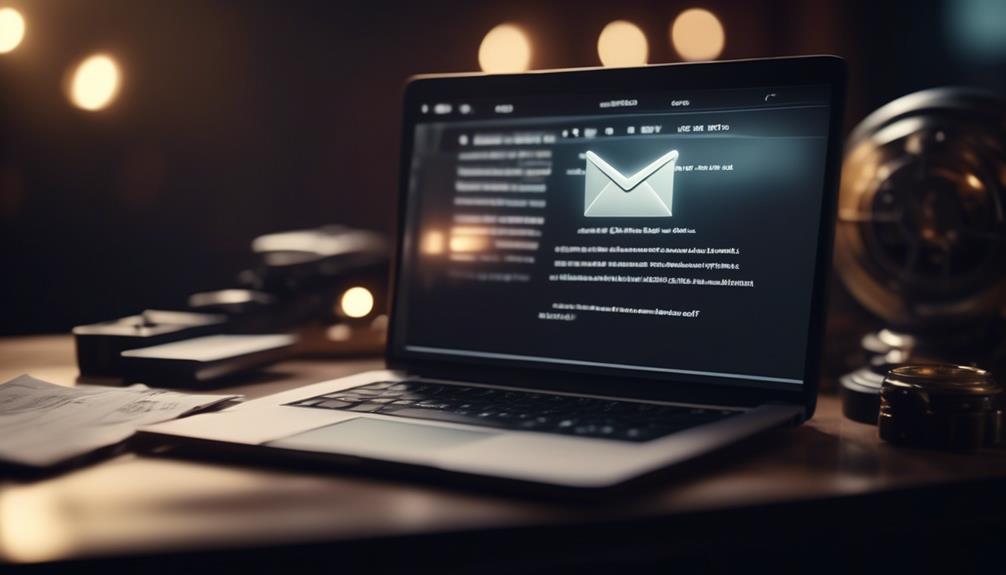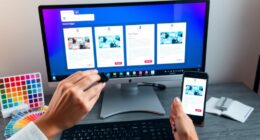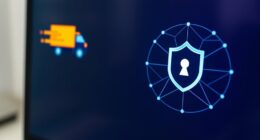We’re all familiar with the challenge of crafting emails that successfully communicate our thoughts and preserve a tone of professionalism. Be it contacting professors, asking about opportunities for research, or looking for advice on financial assistance, selecting the appropriate phrasing can be an intimidating endeavor.
But fear not, because we have a solution that will streamline your communication process and ensure that you make a lasting impression. The key to unlocking efficient and impactful student-staff communication lies in the use of carefully crafted email templates.
But how exactly can these templates revolutionize your emailing experience? Stay tuned to discover the power of structured communication and how it can elevate your interactions with faculty and staff.
Key Takeaways
- Clear and professional emails are crucial for effective communication in academic and professional settings.
- Setting expectations from the outset helps manage recipient's expectations and ensures a prompt response.
- Anticipating recipient's questions or concerns reduces the need for follow-up communication.
- Mastering the art of crafting the perfect email is a valuable skill for educational and professional endeavors.
Crafting the Perfect Email
Crafting the perfect email is crucial for effective communication and professional correspondence in academic and professional settings. When using education email templates, it's important to consider the tone, structure, and content to ensure that the message is clear and professional.
In email marketing, the way information is presented can significantly impact the reader's perception and response. To achieve this, it's essential to set expectations from the outset. Clearly state the purpose of the email and what action, if any, is required from the recipient. This helps manage their expectations and ensures a prompt and relevant response.
When crafting emails, it's important to consider the recipient's perspective and anticipate any questions or concerns they may have. By addressing these in the initial email, it reduces the need for follow-up communication.
In academic and professional settings, clear and concise communication is key. Therefore, mastering the art of crafting the perfect email is a valuable skill that can positively impact your educational and professional endeavors.
Academic Inquiries

When seeking academic inquiries, students may need to request a meeting with a faculty member to discuss research opportunities or find information about undergraduate research programs and funding.
- Requesting a Meeting: When reaching out to a faculty member for a meeting, it's crucial to clearly state the purpose of the meeting, whether it's to discuss potential research opportunities, seek advice on specific projects, or inquire about undergraduate research programs and funding opportunities.
- Finding Information: Students can seek information about undergraduate research programs and funding through various channels such as university websites, academic advisors, or departmental resources. It's essential to be proactive in researching and gathering relevant information before reaching out to faculty members.
- Expressing Specific Interests: When reaching out to faculty, students should express their specific research interests, highlighting how those interests align with the faculty member's expertise. Additionally, students can request mentorship and guidance in pursuing their research interests.
At our institution, we strive to help students navigate these academic inquiries effectively through our email campaign, providing guidance on crafting professional and compelling emails that resonate with faculty members.
Financial Aid and Billing
In our effort to support students in navigating various aspects of their academic journey, we now turn our attention to the critical area of Financial Aid and Billing. As prospective students, understanding the financial aid process and billing procedures is essential for a smooth academic experience. The table below outlines key information regarding financial aid and billing:
| Financial Aid | Billing |
|---|---|
| Application Deadlines | Payment Options |
| Required Documents | Billing Inquiries |
| Types of Financial Aid | |
| Check Application Status |
Understanding financial aid application deadlines, required documents, types of financial aid available, and how to check the status of an application is crucial for securing financial assistance. Additionally, having clarity on payment options and knowing where to direct billing inquiries ensures a seamless experience with financial matters. By providing this comprehensive information, we aim to support students in managing their finances effectively. For further details, beautiful emails will be sent out with in-depth guidance on financial aid and billing.
Student Outcomes
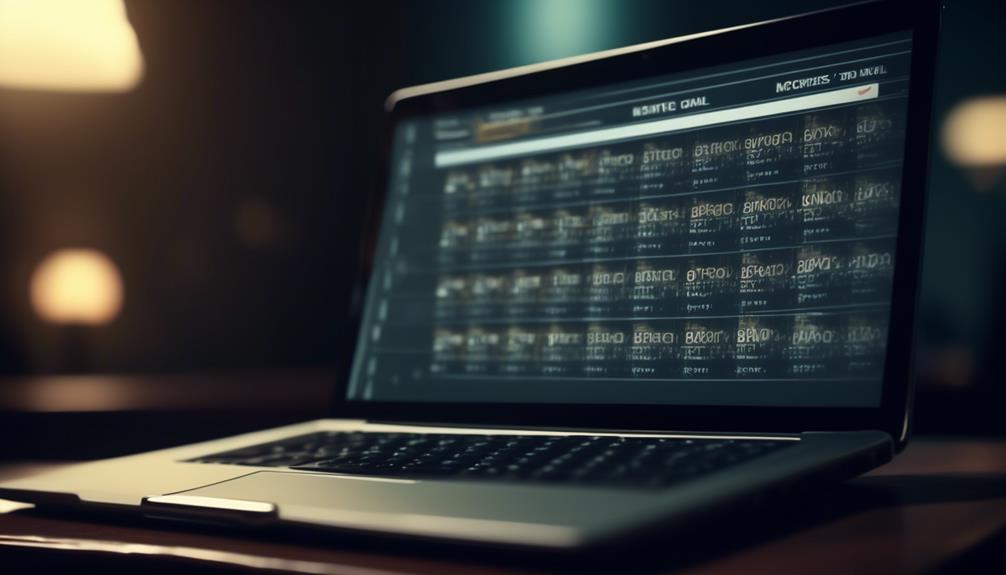
Exploring the practical skills and knowledge acquired through the program, we aim to provide a comprehensive understanding of the student outcomes. As students complete the program, they can expect to achieve the following outcomes:
- Problem-Solving Proficiency: Students will develop the ability to analyze and solve complex problems, equipping them with essential skills for navigating real-world challenges.
- Effective Communication and Presentation Skills: Through the program, students will enhance their communication and presentation skills, which are crucial for success in any professional setting.
- Career Readiness and Professional Development: The program is designed to prepare students for the workforce, ensuring they're equipped with the necessary skills and knowledge to excel in their chosen careers.
These outcomes are carefully integrated into the curriculum to provide students with a holistic learning experience, ensuring that they're well-prepared to meet the demands of the modern job market.
Effective Communication
As students achieve problem-solving proficiency and career readiness through our program, effective communication becomes a pivotal skill that empowers them to convey their ideas clearly and build strong professional relationships.
Effective communication isn't just about speaking; it encompasses active listening, non-verbal cues, and concise messaging. It's essential to convey your message clearly and to the point, while also being attentive to the recipient's responses.
In today's digital age, social media platforms play a significant role in communication, and students should be mindful of their online presence. Building trust and rapport is crucial in effective communication, as it fosters understanding and collaboration.
We look forward to equipping our students with the necessary skills to excel in their careers through effective communication, enabling them to articulate their thoughts, actively engage in discussions, and form meaningful connections.
Frequently Asked Questions
How Do You Write a Student Email?
We write student emails by following a few key guidelines:
- Using a clear subject line
- Addressing the recipient respectfully
- Stating the purpose upfront
- Keeping the email brief and focused
- Ending with a polite closing
Where Can I Get an Email Template?
You can find email templates for various purposes on university websites, career services pages, and academic support resources. These templates cover topics such as admissions, academics, financial aid, campus life, and career services, providing valuable guidance for communicating with students.
They adhere to best practices for emailing students and can be a helpful resource for crafting effective and professional communication.
How Do I Create a Creative Email Template?
We create a captivating email template by using a compelling subject line, visually engaging elements, and concise, personalized content.
It's like painting a vivid picture with words and images to grab attention and guide the recipient to take action.
How Do You Write an Email to a Teacher From a Student Example?
We write emails to our teachers with respect and professionalism. We address them by their title and last name, and use a clear subject line. Our messages are concise, polite, and free of errors.
We express gratitude and maintain a professional tone. We make sure to follow any guidelines or instructions provided by our teacher and sign off with a polite closing.
Conclusion
In conclusion, using email templates for students can significantly improve communication efficiency and effectiveness.
By providing structured formats for various purposes, students can easily navigate through academic inquiries, financial aid, and other important aspects of student life.
Research has shown that utilizing these templates can lead to better outcomes for students and contribute to a positive experience in their academic journey.
